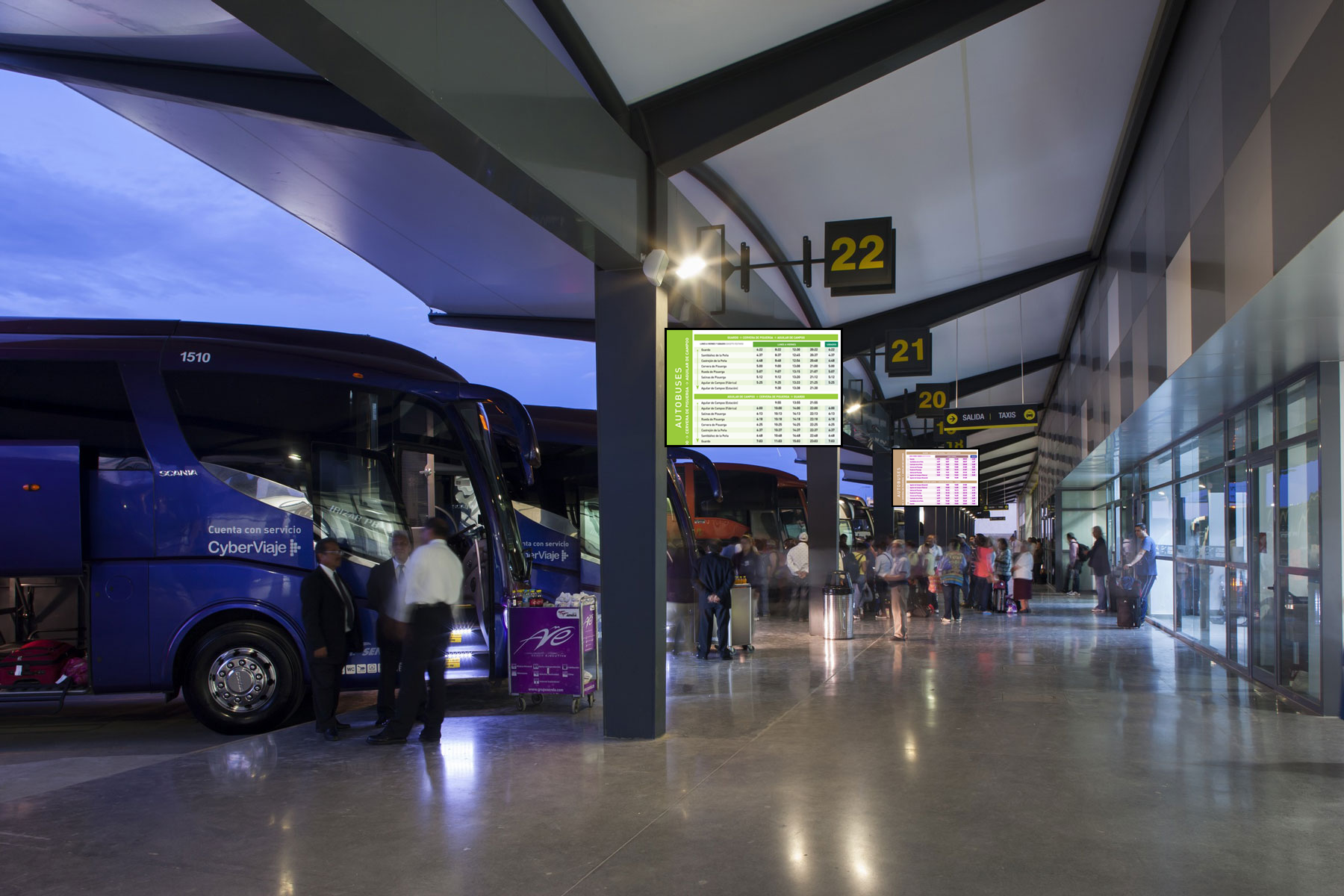
3 ways to modernize Information Systems for Passengers
The information systems for passengers has greatly evolved as time goes by. that started with paper printed signs, commercial light boxes to the actual LED panels and LCD displays. The information systems for passengers have become critical tools in the public transportation world, by providing value and enhancing the customers experience in a speedy manner, allowing them to act consequently.
Offering information in real time
Passengers want to know right away about any change that could affect or delay their travel. Information can be timely supplied in real time in each and every stop, by means of a network, even in the farthest places, allowing passengers to make decisions and react, according to the reliable info received
Promoting info regarding specific businesses and locations
The transit systems can sell spaces in displays for new services and local businesses, which in turn, can produce messages and advertisements to lure passengers. The businesses can be promoted all along the route as well as advertising special offers to those passengers who keep their ticket, in any given business within the community.
However, winning consumers over by means of advertisement requires more than just launching product images. The efficient use of digital technology carries the developing and usage of an adequate content, in the appropriate timing.
Reducing operating costs and producing efficiency
For transit systems with multiple locations, digital displays can connect all terminals in several places, allowing operators, if desired, to control how said displays look, with just one single computer.
Since changes can be performed in real time in the passengers’ information systems and as frequently as operators want, no more printed work nor the time spent to carry out periodical updates are required.
Improving the passengers’ satisfaction
Generally speaking, an informed traveler is a satisfied one. Since a constant access to virtually anything that could impact in their lives, is available nowadays with their smartphones, they expect the same flow of information, wherever they are and at any time.
The versatility in screens is paramount about how a business is run efficiently and effectively. Displays can be used in peak hours to allow customers follow vehicles in traffic, or to be aware of some information videos that helps them pass the time, hence creating a perception of a lesser elapsed time.
Reliable and long lasting displays
A fully tested system with HR and a wide spectrum of colors, give implementers a canvas to virtually create any image with their apps software. The HR screens can show any font of language and/or graphics.
The info to passengers doesn’t only have to convey the adequate messages for them, they must also do it consistently, which means implementing, both equipment and software so they can process varied forms of content, as well as supporting fluctuating environment networks, considering the amount of outdoors displays.


